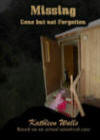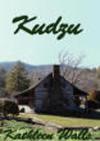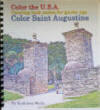Western North Carolina Nature Center
Story and photos
by Tom Straka
Ashville, North Carolina is a fun city to
visit, with lots of hidden gems. Among them is the
Western North Carolina Nature
Center, one of North Carolina’s accredited zoos, but much
more than that. It is both plants and animals, intended to
connect people with an appreciation of the of the Southern
Appalachian native wildlife and habitats. The
WNC Nature Center is a menagerie of over 60 species of wild
and domestic animals, set in a landscape including hundreds of
native plant species, all characteristic of the unique Southern
Appalachian bioregion.
 |
| Entering the Center through
the barn, a place for the domestic animals. |
 |
| The Center is centered on a hillside, but trail slope is kept reasonable and the trail is paved or boardwalk. |
 |
| Appalachian Station is the
home of the reptiles, amphibians, and small mammals.
|
Those
60 wildlife
species are or were native to the Southern Appalachians,
and the “were native” allows for unexpected animals in the mix.
The focus is education and the natural history and unique
biographies of each species is presented via interpretative
signage. Most of the animals were permanently injured or have
been imprinted (lost fear of humans and could not survive in
the wild). Some have never lived in the wild or are part of a
Special Survival Plan for endangered species (a breeding and
management plan to sustain populations of endangered species).
The animals are enclosed with fencing on a
hillside along the Swannanoa River. A trail with many loops
allows visitors to roam between species. But the trail is more
than animal species, native Southern Appalachian plants are
part of the experience. So, this is a mix of plants and
animals. One short loop (two-thirds of a mile) is the Trillium
Glen Nature Trail near the river at the bottom of the hillside.
There are daily programs that include animals being fed,
meeting birds or reptiles close-up, and natural history
presentations. The trails are a combination of wooden
boardwalks and paved paths to be stroller friendly.
As you enter the center, there is the
North Carolina farm. There are lots of common domestic animals,
but also some unusual sheep and goats. There are indoor
exhibits at Appalachian Station, with reptiles, amphibians, and
small mammals. This is where the kids can get close to snakes
safely, as there is glass (since the exhibits include
rattlesnakes and copperheads, the glass is comforting).
Scattered on the trail are a few nature play stations for the
kids (including puppet theaters, a climbing web, and musical
instruments made of wood and rocks).
A Dozen
Selected Favorite Critters

American black bear.
There is a pair, male and female, unfriendly to each
other in summer, but they love to share a den in
winter.

Cougar,
also called mountain lion.
It is thought that the eastern cougar, the breed native
to the Southern Appalachian region, is now extinct.
This cougar, Mitchell, was orphaned in Oregon. Mitchell
was snoozing the day I was there.

American
Red Wolf.
Only remaining natural population is at the
Alligator River National
Wildlife Refuge in eastern North Carolina.

Gray Wolf.
This wolf is snoozing.
In the early 1900s, gray wolfs inhabited 35 of
the current 50 states.
Today, they can be found wild in only nine states.
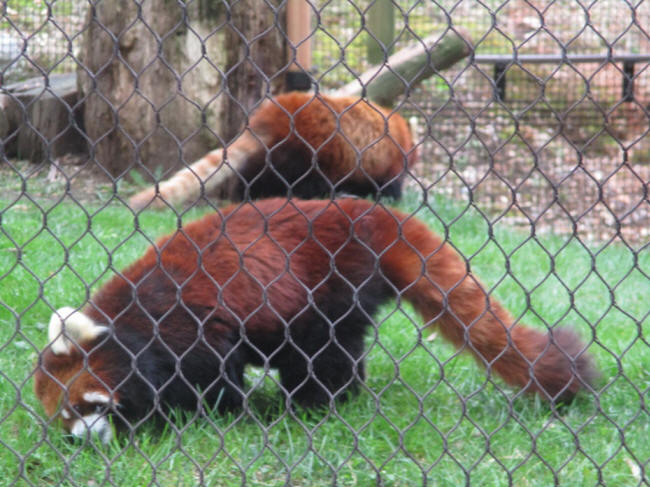
Red Panda.
How did a Panda end up in this mix?
They are native to Asia’s forest eastern Himalayas and
southwestern China, endangered by logging
and the spread of agriculture. They qualify for the
collection due to a ancient “cousin” that once
lived in the Western North Carolina region, Bristol’s
Panda

A colorful
corn snake.
Ginger was donated to the WNC Nature Center by a
family who kept her as a pet.
She grew up in the pet trade and has not known life in
the wild. Her pattern has beautiful red undertones.
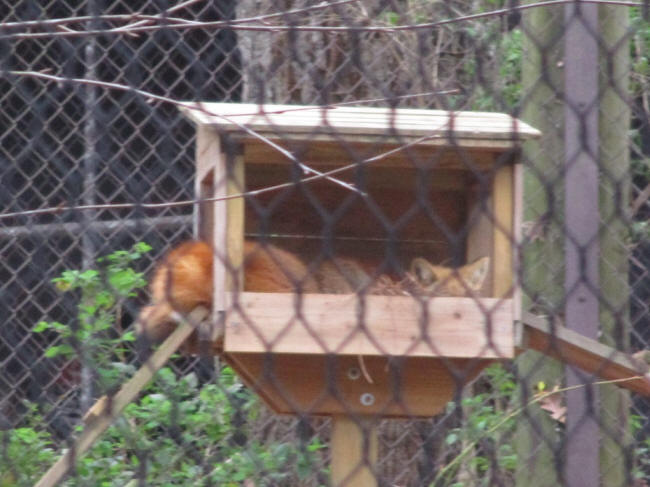
Another snoozing native, a
red fox.
Or, maybe it is just shy.
There are two red foxes, both were born in the wild,
and both lost legs in a trap. So, sometimes they are
not friendly and hide around their habitat.

I have several photographs of Meatloaf, the
hellbender,
but he blends into the stream bottom so well he is
nearly impossible to distinguish. Still, he is one of
the most interesting creatures at the Center,
at least to me, as I have not seen a hellbender before.
It is better to illustrate the type of information
boards used in the displays to show a hellbender.

American River Otter.
From their webbed feet to their rudder-like tails and
extra eyelids
that act as goggles, river otters are well-adapted for
a life in the water.
The habitat for the otters is well-developed, with
plenty of opportunities to watch them at play.

Turkey Vulture.
Vultures, also known as buzzards, are scavenging birds
which feed on the remains of dead animals. Two species
of vultures are found in North Carolina, the Turkey
Vulture and the Black Vulture The black vulture is more
common in eastern North Carolina while the turkey
vulture is more common in the mountains and the
Piedmont.
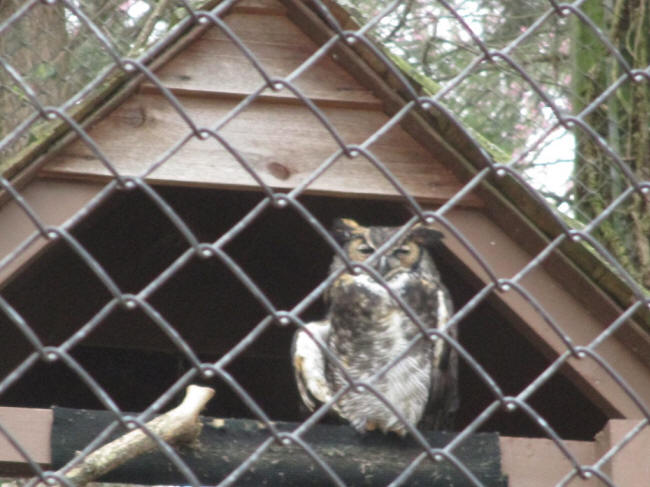
Barn owls
are very commonly found in the South and live all
across the United States. Their species has learned to
adapt to a decreasing number of habitats by building
nests in human populated areas.
Barn owls can be found nesting in barns and abandoned
city buildings.

While walking the trails, the visitor is exposed to all
kinds of Southern Appalachian wildlife and plants.
Since this is group of favorites, I enjoyed much of
nonofficial wildlife, like the
squirrels
that watched from the trees.
A Glance at the Farm
The North Carolina farm should be especially attractive to the
younger visitors. While there are many common farm animals,
some are more exotic. All are fairly friendly and approachable.
The farm
includes a petting zoo where visitors can pet an array of farm
animals.
 |
|
View of the North Carolina Farm from behind the barn. |
 |
|
The farm includes several exotic goats and more common
ones, including a Nigerian dwarf goat, Oberhasli goat, and Angora goat (shown here). The Angora goat is an ancient breed, dating back as early as the fourteenth century. They originated in Turkey and are named after the country’s capital, Ankara, historically known as Angora. |
 |
|
Sicilian Donkey.
They are slightly
stockier than a horse, have large ears, and are usually
light brown to gray in color, with some white on their
muzzle. Donkeys are very social and need the company of
other donkeys or animals. Contrary to popular
belief, they are very clever. |
The WNC Nature Center is more than a zoo; it is a nature
experience, with trails that lead through a Southern
Appalachian woodland and an emphasis that includes native
plants. There are daily animal programs, like animal feeding
time, and formal events throughout the year, like arts and
crafts festivals and even a
Brews & Bears Day.
The Center’s focus on endangered species and special needs
wildlife is evident throughout the park, creating something
better than a normal zoo experience. There are lots of neat
things to do in Ashville, and this is definitely one of them.
Author.
Tom Straka is an emeritus professor of forestry at Clemson
University. He has an interest in history, forestry and natural
resources, natural history, and the American West.



















